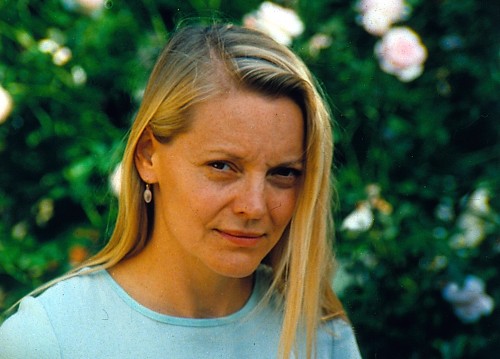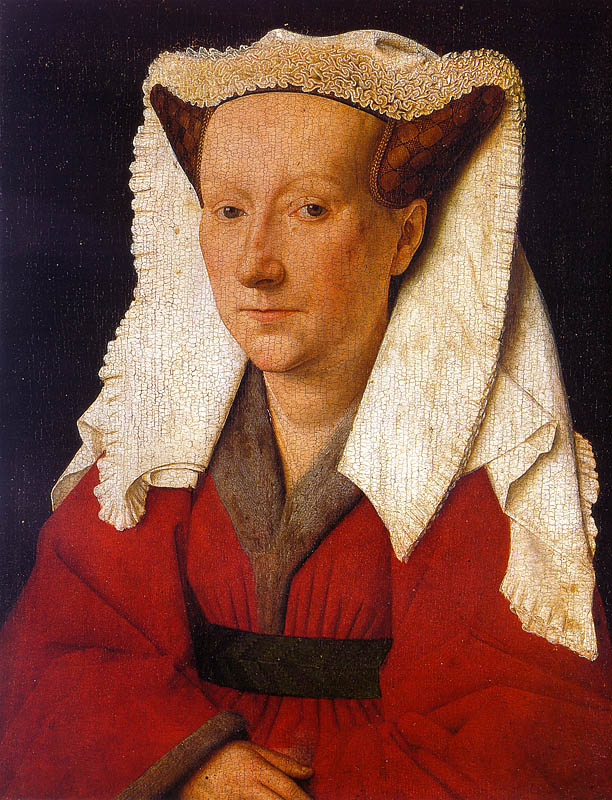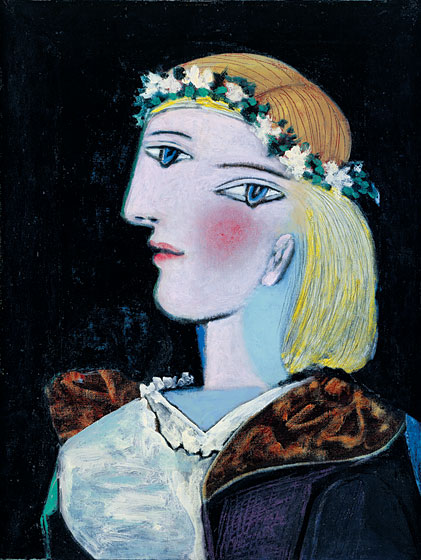
Tony Tasset, "Judy," 1998. 35mm six second film loop, dimensions variable. Courtesy Leo Koenig Projekte Inc.
For one week only, this Letter from London is from New York — B.S.
Tony Tasset’s Judy, currently on show at the Leo Koenig Projekte Space in Chelsea, New York, is a six-minute 35mm film of the artist’s artist wife, Judy Ledgerwood. Against an out-of-focus backdrop of what might be a rose bush (nodding to Ledgerwood’s own paintings), her head tilted, the subject stares into the camera. Two things happen in sequence: she smiles, very slightly, and a small inverted ‘v’ of concern appears between her eyebrows. The camera moves in, almost imperceptibly; a breeze catches the wisps of hair at her temples; the film is over.
As the film loops, you become aware of its means of projection: the clacking 35mm projector, used most often by contemporary artists as a signifier of cultural obsolescence (Tacita Dean, Rodney Graham). As with these artists, Tasset’s work implies a kind of easy nostalgia for the prelapsarian analogue age. Here, though, the gradual deterioration of the film itself carries a specific emotional meaning. Tasset’s film stages a particular act of looking: the searching scrutiny of a gaze passed between lovers. Ledgerwood’s gaze, at once open and guarded, apparently spontaneous, matches that of the camera. The duration of the film itself is the duration of a single and specific act of looking (six seconds between blinks), and the look itself is charged with a fear of loss. Tasset’s – the camera’s – gaze is that of the lover unwilling to contemplate its own deterioration. Lovers fear the loss of sight in old age: imagine not being able to see that face you like. Imagine how greedy the act of looking becomes when the knowledge of its impermanence sinks in.

Jan van Eyck, "Portrait of Margaret van Eyck," 1439. Oil on wood. Courtesy Stedelijk Museum voor Schone Kunsten, Bruges, Belgium.
Tasset’s film has precedent in the history of portraiture, whose explosion in the West in the fifteenth century is due, in part, to a comparable fear of the loss of sight. Oil portraits made in the Netherlands exploited their medium’s infinitesimal detail to evoke human presence, not mere likeness: something beyond normal sight. The Damoclean omnipresence of death, as well as the necessity of prayer after death (heaven not being guaranteed to anyone) required the creation of meticulous embodiments of the person, warts and all. Tasset’s film, like Van Eyck’s portraits, invests the artist’s sight with a hopeful power, a hope that the look can last beyond death, that it can transcend it. Its obsessive and unblinking clarity dramatizes both that hope and the doubt that hides behind it.

Pablo Picasso, "Marie-Thérèse avec une guirlande," 1937. Oil and pencil on canvas. Private Collection © 2011 Estate of Pablo Picasso/Artists Rights Society (ARS), New York.
It’s a happy coincidence that Judy is being shown concurrently with Gagosian’s show of Picasso’s 1930s images of Marie-Therese Walter, two streets away. As with Tasset’s work, Picasso’s paintings, sculptures, prints, and drawings dramatize the fevered and hungry gaze of the lover convincing itself that love is stronger than death. In other words, both shows embody what Dave Hickey called “love songs for people who live in a democracy,” and have all of the yearning self-belief of great pop music. Tasset claimed that in Judy, he was aiming to be as “open hearted and corny as a Neil Young song.” Or, indeed, a Picasso, or a Van Eyck, corny being relative, but the closest kin I can think of to Tasset’s film is Philip Larkin’s poem, An Arundel Tomb, with its final lines:
…to prove
Our almost-instinct almost true:
What will survive of us is love.



